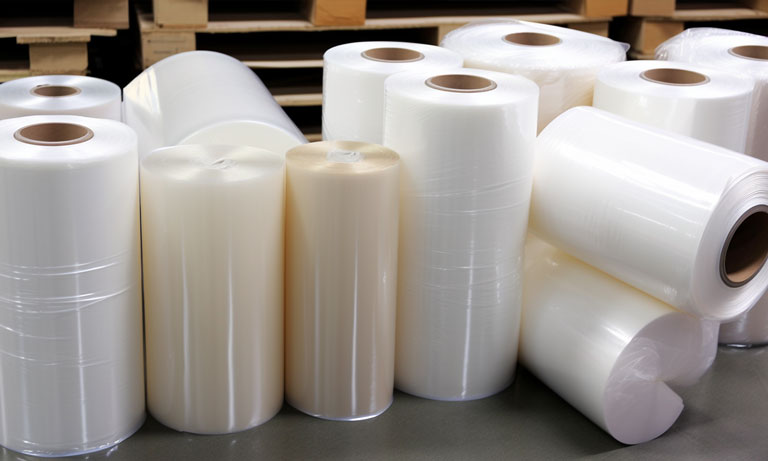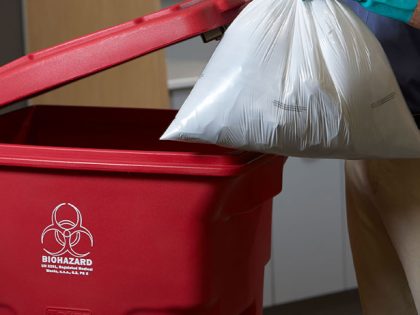- Your cart is empty
- Continue Shopping
Industrial Packaging Solutions: A Comprehensive Guide to Stretch Films, Bubble Wraps, and Protective Materials
-
4scxi
- Posted on
- 0 comments

Introduction
Industrial packaging plays a critical role in protecting products during storage, handling, and transportation. The right packaging materials can prevent damage, reduce costs, and ensure products reach their destination in perfect condition. This comprehensive guide explores the most commonly used industrial packaging solutions and their optimal applications.
Stretch Films: The Versatile Wrapping Solution
What Are Stretch Films?
Stretch films are highly stretchable plastic films used to wrap products and secure them to pallets. They provide excellent load stability while being cost-effective and easy to apply.
Types of Stretch Films
Hand Stretch Film:
- Applied manually using handheld dispensers
- Typical thickness: 12-20 microns
- Ideal for: Low-volume operations, irregular shaped items
- Stretch ratio: 150-300%
Machine Stretch Film:
- Applied using automated wrapping machines
- Typical thickness: 8-25 microns
- Ideal for: High-volume operations, consistent pallet sizes
- Stretch ratio: 200-400%
Pre-Stretched Film:
- Already stretched during manufacturing
- Requires less force to apply
- Ideal for: Reducing worker fatigue, light-weight products
Key Properties and Benefits
- Load Containment: Keeps products secure during transport
- Weather Protection: Provides moisture and dust barrier
- Puncture Resistance: Protects against sharp edges
- Transparency: Allows for easy product identification
- Cost-Effective: Reduces packaging material usage
Best Practices for Stretch Film Application
- Proper Pre-Stretch: Optimal stretch reduces material usage
- Overlap Consistency: Maintain 50% overlap for maximum strength
- Corner Security: Extra wraps at corners prevent load shifting
- Top and Bottom Wrapping: Secure both ends of the load
- Equipment Maintenance: Regular calibration ensures consistent application
Bubble Wrap: The Universal Cushioning Solution
Understanding Bubble Wrap Construction
Bubble wrap consists of two layers of plastic film with air-filled bubbles trapped between them. The air-filled chambers provide excellent cushioning properties.
Types of Bubble Wrap
Small Bubble (3-6mm):
- Provides surface protection
- Ideal for: Electronics, glassware, delicate items
- Offers better conformability to product shapes
Medium Bubble (10mm):
- Balanced protection and cushioning
- Ideal for: General packaging, moderate-weight items
- Most versatile option for various applications
Large Bubble (25mm):
- Maximum cushioning protection
- Ideal for: Heavy items, long-distance shipping
- Provides superior shock absorption
Specialized Bubble Wrap Variants
Anti-Static Bubble Wrap:
- Protects electronic components from static discharge
- Essential for: Computer parts, circuit boards, sensitive electronics
Barrier Bubble Wrap:
- Includes additional barrier layers
- Provides: Moisture protection, chemical resistance
Perforated Bubble Wrap:
- Easy-tear perforations for convenient sizing
- Reduces: Waste, cutting time, labor costs
Proper Usage Guidelines
- Size Selection: Choose bubble size based on product weight and fragility
- Wrapping Technique: Bubbles should face inward toward the product
- Seal Properly: Use appropriate tape or heat sealing
- Multiple Layers: Heavy items may require double wrapping
- Corner Protection: Pay special attention to vulnerable corners and edges
Other Essential Protective Materials
Foam Packaging
Polyethylene Foam:
- Closed-cell structure provides excellent cushioning
- Chemical resistant and moisture proof
- Applications: Electronics, automotive parts, medical devices
Polyurethane Foam:
- Open-cell structure offers superior shock absorption
- Excellent for irregularly shaped items
- Applications: Furniture, artwork, fragile collectibles
Paper-Based Protection
Kraft Paper:
- Eco-friendly void fill option
- Provides light cushioning and surface protection
- Applications: E-commerce packaging, gift wrapping
Honeycomb Cardboard:
- Lightweight yet strong structure
- Excellent for creating custom inserts
- Applications: Heavy machinery parts, furniture components
Selecting the Right Protective Packaging
Factors to Consider
- Product Characteristics:
- Weight and dimensions
- Fragility and shock sensitivity
- Surface finish requirements
- Chemical compatibility
- Shipping Conditions:
- Transportation method
- Distance and duration
- Environmental conditions
- Handling intensity
- Cost Considerations:
- Material costs
- Labor requirements
- Storage space needs
- Disposal costs
Performance Testing
- Drop Testing: Simulates handling impacts
- Vibration Testing: Replicates transportation conditions
- Compression Testing: Evaluates stacking strength
- Environmental Testing: Assesses performance under various conditions
Sustainable Packaging Trends
The industrial packaging industry is moving toward more sustainable solutions:
- Recyclable Materials: Using mono-materials for easier recycling
- Biodegradable Options: Plant-based protective films and foams
- Reusable Solutions: Durable protective packaging for multiple uses
- Optimized Design: Reducing material usage while maintaining protection
Implementation Best Practices
- Conduct Packaging Audits: Regularly assess current packaging effectiveness
- Employee Training: Ensure proper application techniques
- Quality Control: Implement inspection procedures
- Supplier Partnerships: Work with reliable material suppliers
- Continuous Improvement: Monitor performance and adapt as needed



